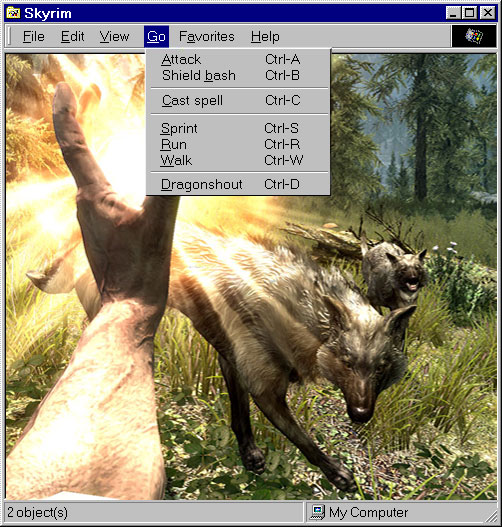
After some chat about the olden days of gaming in Discord that include recollections of the original Unreal, released in 1998, I felt the silly urge to re-install the game–and did!
For other people who are thinking, perhaps unwisely, of giving in to their nostalgia, here is what I did:
- Went to my gog.com library to install the game from there. It turns out I never got the game on gog.com. I then checked Steam. On both platforms I have:
- Unreal Tournament
- Unreal Tournament 2004
- Unreal Tournament 3 (re: UT2007)
- Unreal 2
- No original Unreal. Sad face.
- I pondered whether I wanted to buy a 25-year-old game, but the decision was made for me because Epic delisted the game on all digital stores last year (along with all the others I listed above).
- I dug out my binders of game CDs (BOGs) to see if I had my original Unreal disc. I did!
- I dug out my USB DVD drive and plugged it in
- I inserted the CD and waited to see what would happen
- I got a pop-up about compatibility mode, clicked OK and waited
- The installer launched!
- The game installed!
Amazingly, the unpatched original CD version actually worked. It defaulted to 800×600 resolution. I then applied the UnrealClassicPatch227i, a community-made patch that builds on the efforts of Epic to allow the game to work with modern renderers and fixes a few bugs and glitches. The patch is on the community site OldUnreal, found here.
I made the following change to the console in the unreal.ini file, found in the Unreal/System folder, under the [Engine.Engine] section. This enables the UT-style Umenu system, which gives access to some of the newer options (and makes changing keybinds easier, too):
Console=UMenu.UnrealConsole
The original line is Console=UBrowser.UBrowserConsole.
I set the resolution to the same as my monitor, 2560×1440, which looks fine, though the HUD shrinks to micro-sized. Apparently HUD scaling is coming to the 227j patch.
I originally chose OpenGL for the renderer, but it was too dark and changing brightness had no effect. I switched to the Direct3D 9 renderer and was able to change the brightness from Impenetrably Dark But Undoubtedly Moody to Moody But I Can Actually See Some Things Now.
Finally, I installed some high resolution textures, which look fine, though there’s a jarring difference when you see a fuzzy original texture next to a high-res one. You can fix most of these by also installing the HD Skins pack, available from the same link. HD Skins is actually a mutator, but the readme.txt file doesn’t note that you must start a new game to first enable the mutator. You can save the configuration so the mutator always runs after that.
The game itself plays great, of course. I could probably run it at 100,000 x 100,000 resolution and still get 140 FPS. Now we’ll see how long a 25-year-old first-person shooter can hold my interest.
Bonus shot:

